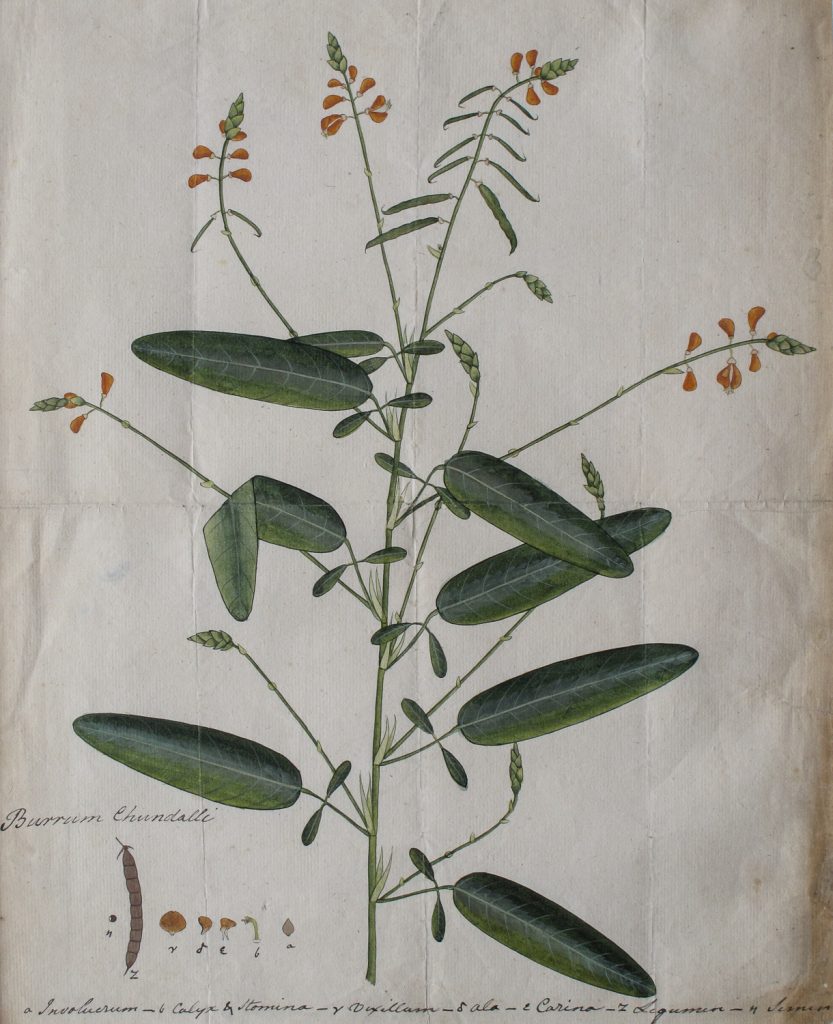34. Codariocalyx motorius (Houttyn) Ohahsi LEGUMINOSAE
John Hope’s ‘moving plant of Bengal’
Around 1775 the Scottish surgeon James Kerr sent a drawing of this plant by a Bengali artist to Dr John Hope at the Royal Botanic Garden Edinburgh, with notes on the plant and its use for magical purposes by the people of Dacca (now in Bangladesh). Kerr also sent seeds that were grown by Hope in the Leith Walk garden and caused a sensation on account of its leaf movements. At night the large terminal leaflet droops to become pressed against the main stem, and the two small lateral leaflets are in constant movement throughout the day (it is also called the semaphore or telegraph plant). The plant therefore appeared to show nervous responses, and in this to represent a link between plants and animals. A member of the pea-flower family, the plant is widespread from the Himalaya southwards and eastwards through India and Sri Lanka to China, South-East Asia and northern Australia.

